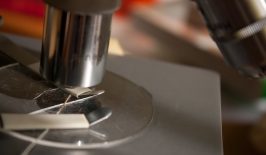Modern 3D printing could revolutionise manufacturing, but what is its potential for sustainable development?
At first glance, 3D printing seems innocuous in nature. What may have started out as something seen as a gimmick with no practical use for the general public, in the past few years it has been the driving technology behind countless innovative green and socially-sustainable projects. It has already made negative headlines too for its ability to produce dangerous items (perhaps most dramatically, when back in 2013 someone uploaded the specs for a fully-operational single shot handgun), and also for possible copyright issues and the effect it could have on traditional manufacturing.
While its use certainly has profound implications for consumers, manufacturers, and policy makers around the world, 3D printing is also a technology with huge potential for social and environmental transformation. On the flip side, if developed unwisely, this technology could mark a step towards increased consumption and environmental degradation.
How Does it Work?
The process of 3D printing, also known in the industry as additive manufacturing (AM), consists of layering material such as plastics or metals according to a computer-aided design (CAD). The design is composed of multiple two-dimensional arrangements which are then printed and layered in coordination. The result is a complete, 3D object of practically anything.
In terms of accessibility, current prices for 3D printers range from several hundred to several hundreds of thousands of USD. Though at the moment still a costly investment for individual consumers, with the technology becoming ever more affordable, they soon could be a viable option for personal use.
In a future where 3D printing becomes mainstream, whenever an individual needs something, there wouldn’t be a need for a trip to the local shop. That shop, in turn, would no longer need to keep so many thousands of products on hand. An individual consumer could simply upload a CAD of the product you need (say, a broken part of your cell phone or refrigerator) and print it on demand from home.
Modern shopping could be completely revolutionised. Some have even contemplated whether the shoe and apparel industry will have to compete with print-at-home clothes using specially tailored computer models to fit each individuals’ bodies. Elizabeth Royte, American science writer with Smithsonian Magazine, predicts that:
“Inventories would shrink, along with transportation, handling and storage costs. Retail shops might even disappear if orders can be fulfilled directly by manufacturers who deliver to their customers’ homes.”
With increasingly public digital templates, individuals have the potential to create rather than just consume something in the traditional sense, in an overthrow of traditional manufacturing methods.
Uses in the Field
1. Bioengineering
Potentials for the field of bioengineering read like something out of a science fiction novel. Among the wider medical community, additive manufacturing is already being used to personalise and print plastic prosthetics, bone implants, and models for surgical practice.
Firms like Swedish company Cellink have taken this technology yet another step further and patented their own “bioink” – a liquid mixed with human cells that allows for the printing of human tissue.
With clients at research institutions around the world, the company’s founder believes that within two decades his bioink could be used to print organs fit for human implantation.






